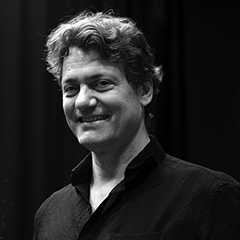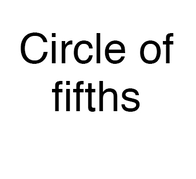FURTHER READING ABOUT THE PROJECT
Sonotical interpretations of 70 songs by Geirr Tveitt
by Njål Sparbo
Un-settling
The songs of Geirr Tveitt were chosen for the “un-setting” research project, because Tveitt’s aesthetics challenge musicians to destabilize their own musical mindset and explore "outside of the box". The aim was not to achieve indisputable interpretations of Tveitt’s songs, but rather to raise questions about different modes of understanding, and to observe how the music changed with different modes of exploration. The research was consequently not directed towards finding irrefutable answers to the group’s initial key questions, but towards immersing the questions into artistic practice, utilizing the resulting musical expressions to seek additional, and perhaps even more excavating questions.
Meaning and ambiguity
Conscious thoughts are often linked to a particular language, and multilingual people can "think" or communicate in different languages, which again leads to alternate modes of reasoning due to the grammatical structures, the vocabulary and the subsequent paradigmatic associations. Other modes of “reasoning” can be through recognition of e.g.:
-
mathematical formulas or geometrical shapes,
-
visual images (pictures, sculptures, architectural drawings …),
-
structured movements (choreography, gesticulation ...),
-
kinaesthesia (sensation of motion), proprioception (physical states, temperature, balance, hunger, pain …), or
-
sensory perception (smell, taste, sight, touch …) – or through recognition of structured sounds.
If music is defined as “an expression which is meant to be communicative in a defined context, using a combination of sounds and silence organized over a period of time”, then music can be considered to be a way of reasoning.
“Music is language”. Arne Nordheim
Performers normally assume that the musical aspects of a song are closely interlinked with the lyrics (or the title), and the interpretation of words seems to be the main entry for reflecting about a song’s essence. The performers’ presentation seems to personify the quintessence of the music, inviting the audience to make similar reflections. However, if the expressed meanings become exceedingly definite (as is often the case with classically trained singers), the expressions might lose important aspects of their artistic attractions. Poems generate associations and rarely aim to delimit the inherent issues. Artistic potential can be unlocked if the performers generate awareness of embedded meanings (sub-texts), coalescing the words with various connotations, turning the performative expressions into an ambiguous complex of possible meanings.
Music itself rarely has any obvious semantic content, and musical meaning is a rather abstract phenomenon. Aside from lyrics, musical meaning is shaped through the interpretation of sounds – much in the same way that meaning can be constructed by different impulses in the central nervous system through semiosis of language. During tacit reading, the words may sound like an echo of a sounding "voice" with prosodic features in the reader’s consciousness. Likewise, music can take place completely silently in the mind as musically formulated layers of sounds, melodies, harmonic progressions etc. The cognitive analysis of the sum of these musial parameters is utilized as reliable predictions of the inherent meanings of the textual and musical expressions of the score, intended to promote informed and coherent interpretational choices.
Analysing separate segments of a song may assist performers to distinguish pieces of a puzzle, but the question of how to interpret the whole picture will still be unresolved; intertwined with subjective experiences of patterns, contrasts and dynamic developments and synergically associated with issues relevant to the interpreter’s personal mindset and emotional dispositions.
One might consider the composer of a musical piece to be the original constructer of musical meanings, but the performers and listeners recreate meanings as a result of an intricate interaction with a variety of entirely separate elements, based on both cultural and individual frames of reference. Everything associated whilst composing, singing, playing or listening is included in addition to the sounding music, contributing to an all-embracing musical experience: a fusion of subjective associations, memories, thoughts, cultural allusions and factors such as venue, context, relationship to the composer and/or era, instrumentation, the body language and attire of those present, as well as random sounds or events that may occur during a performance.
Every meaningful expression implies a specific intention, but the receiver will always interpret intentions in a different way than intended. Even if performers of classical Western music realize that they can never succeed completely, tremendous efforts are made to tune into the composer’s and poet’s minds in an attempt to comprehend and convey the inspirational intentions and assumed essence of the composition to their audiences. A sense of fidelity towards the creators’ original intentions is in the forefront, even if the performer acknowledges that the listeners reconstruct meaning in their own ways, according to their presonal habits and preferences.
Exploring exploration
Exploring a piece of music also involves exploring the mode of exploration. Today, classically-trained musicians are extremely competent to analyse music from scores. Even before starting to rehearse a piece of music, a process of conceptualizing musical content through examining the score has already begun, giving the musician a framework with regards to key, meter, tempo, tonality, dynamics, texture, phrasing, structure, dramaturgy, complexity, form, timbre, articulation etc. This includes technical reflections as well: for the singer - range, register, breath; for the pianist - fingering, pedals, etc. If the composer's name and style are known to the musician, there will be anticipations of performance tradition, style, musical pallette and aesthetics. This enables many musicians to transform the score into sound whilst reading it for the first time (prima vista).
“Once a musical style has become part of the habitual responses of composers, performers, and practiced listeners, it may be regarded as a complex system of probabilities … Out of such internalized probability systems arise the expectations — the tendencies — upon which musical meaning is built.”
(Meyer: 1957, p. 414)
In the introduction to Tveitt's controversial treatise "Tonalitätsheorie des parallelen Leittonsystems" from 1937, he states that the modal scales express different mindsets, originated from cultural affiliations. In order to comprehend his music, he requests that musicians depart from the Major/minor mindset deriving from the European music tradition and embrace the essential feelings for the different modal scales. Tveitt's deliberate use of modality is basically expressive, and for a classical trained European musician it takes time and effort to realize what that entails. Working with Geirr Tveitt's songs involves a challenge towards traditional and habitual ways of working with musical perception.
This change of mindset is not merely about analytical or intellectual aspects or about the basic feeling of tonality, but also the embodiment of rhythmical energy and the very ethos of expression. Tveitt's music is founded on his ideas about the force of nature and human primordial will (urvilje). He was drawn towards what he believed to be the Viking attitude to life in general and was extremely critical to cultural or religious attitudes that encourage people to suppress their basic instincts in the name of civilization or oppressing deities. He named the most preferred scales after "Hávamál" – a set of 165 stanzas attributed to the Norse god “Odin”, containing practical and philosophical words of wisdom.
“Hávamál” - verse 160:
Þat kann ek it fimmtánda
er gól Þjóðreyrir (RIR)
dvergr fyr Dellings durum
afl gól hann ásum (SUM)
en álfum frama (FUM)
hyggju Hroptatýr (TYR)
I know a fifteenth,
that first Thjodrerir
sang before Delling's doors
giving power to gods, prowess to elves,
foresight to Hroptaty
Possible readings of the ethos of the scales could be:
RIR (= Dorian) => Thjodrerir sang before Delling's door => “emergence, creativity, radiance ...”
SUM (= Phrygian) => the gods => “strength, authority, power...”
FUM (= Lydian) => the elves => “skill, proficiency, prosperity ...”
TYR (= Mixolydian) => Hroptaty = Odin => “wisdom, prudence, clarity ...”
Listen to audio "Nótt ok Dagr" (right sidebar)
Music by Geirr Tveitt (1908-1981) Op. 153 (1944/53)
Norse lyrics by Snorri Sturlusson from “Gylfaginning”
Basic narrative: “About the creation of Night and Day”
From CD recording “Norwegain Songs Vol. 2” – Quattro Records, QCD 9410
Njål Sparbo’s arrangement for voice, harp and string quintet
Performed by Njål Sparbo (voice), Ellen Bødtker (harp), Bjarne Magnus Jensen (violin), Vegard Johnsen (violin), Jon Sønstebø (viola), María Alejandra Conde Campos (cello), Steinar Haugerud (double bass)
However, Tveitt's tonal universe is frequently in constant flux. Every interval seems to be charged with nested meanings, and the tonality is evasive. His expressive use of modal scales can be paralleled to a train of thoughts or a flow of emotions. When the tonic of a phrase seems to be momentarily clear, the expression is perceived like a statement, but at the same time the chord progression offers other posibilities of tonal anchoring, suggesting intertwining thoughts or ambigous emotions. When two or more modes occur simultaneously, the impression is that of a suspended reflection – without conclusion.
Ambiguity – layers of meaning
Reading or listening to music with a mindset oriented toward comprehension stimulates a series of interpretations that may turn sounds into something meaningful. We all have interpretive behaviours; a selection of elements we habitually tune into, from which we evaluate the musical experience. In our search for comprehension and artistic experiences, we actively construct patterns to support our interpretations. These interpretations are personal, and not necessarily connected to the era, style, intention or cultural context which prevailed during the composition’s conception.
We can, however, break down, modify, and extend our own interpretive behaviours by consciously increasing our interest in certain topics, creating innovative layers of meaning. This can make us able to get into a state of a flowing musical experience, even if the music was composed or performed in a way which we normally would label as unengaging.
During the research project, we consciously aspired to change our attentive focus, taking interest in a variety of topics, modifying our conceptual strategies and working with multiple layers of meanings. Inspired by Lasse Thoresen’s reflections, we tested a variety of “listening behaviours”. In particular we applied the phenomenological reductive attitude of accumulating additional information about the music by deliberately attempting to suspend our prejudiced conceptions. In many ways this is contrary to our classical, comprehension-oriented professional training. The mindset of being “focused, but not settled”, opened up for alternative experiences of musical meaning, making us aware of multiple possible interpretations of Tveitt’s songs.
Arcs of tension
Initially we focused on the movements from or toward tonal centres, using Tveitt’s theories of the modal scales as a basis. When the music moves away from its basic tonal platform, the melodic and harmonic tensions intensify, raising anticipations for a return to the perceived tonal centre or to a moment of tentional release (temporary rest) before moving on. Since Tveitt’s use of modality often seemed to suggest a variety of potential tonal centres, we decided to experiment with “imagined tonics”, entailing that any of the seven modes could be put into play at any time.
See illustation Circle of fifths (right sidebar)
When tested, the different “imagined tonics” resulted in different arcs of tension. The hypodorian, hypolydian, hypophrygian, hypomixolydian etc. were put into play. Consequently, new associations and unexpected musical meanings emerged. This led to further experiments and improvisations with increasingly random “imagined tonics”, gradually braking our perception of static tonics apart.
AUDIO Nótt ok Dagr
THE INDIVIDUAL PROJECTS summaries
RETHINKING EXPRESSION IN THE PIANO MUSIC OF HARALD SÆVERUD
Einar Røttingen
Njål Sparbo & Einar Røttingen
COMPOSER´S HOMES AND EXPRESSIONS OF BELONGING
Arnulf Christian Mattes
Hilde Sveen & Torleif Torgersen
Knut Vaage & John Ehde
Signe Bakke
DISCOVERING EXPRESSIVE MEANS IN
Liv Elise Nordskog & Signe Bakke
TAKING A FRESH LOOK AT SÆVERUD’S SECOND AND THIRD STRING QUARTETS
Ricardo Odriozola

